Nauman Javed
NBA2Vec: Dense feature representations of NBA players
Feb 26, 2023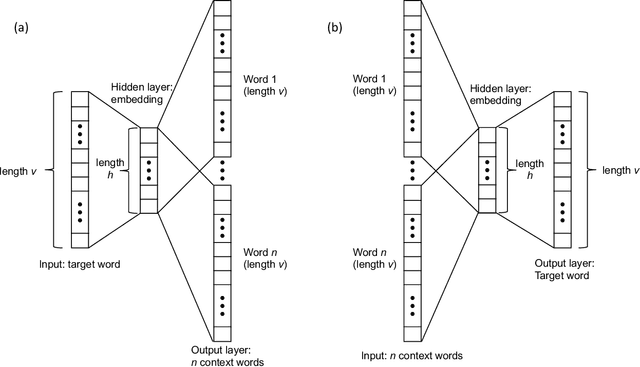
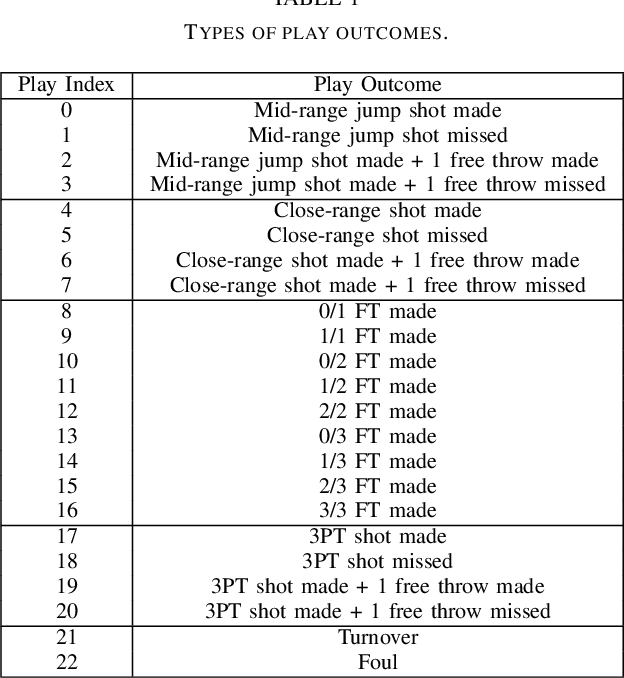
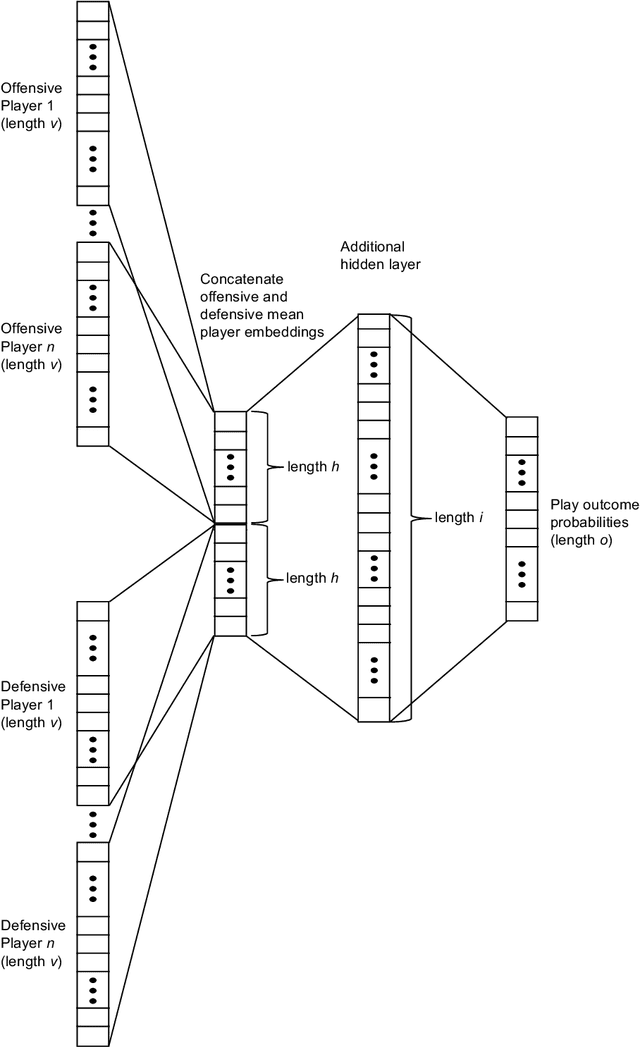
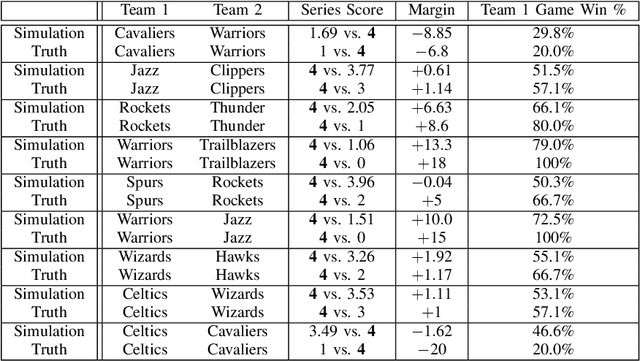
Abstract:Understanding a player's performance in a basketball game requires an evaluation of the player in the context of their teammates and the opposing lineup. Here, we present NBA2Vec, a neural network model based on Word2Vec which extracts dense feature representations of each player by predicting play outcomes without the use of hand-crafted heuristics or aggregate statistical measures. Specifically, our model aimed to predict the outcome of a possession given both the offensive and defensive players on the court. By training on over 3.5 million plays involving 1551 distinct players, our model was able to achieve a 0.3 K-L divergence with respect to the empirical play-by-play distribution. The resulting embedding space is consistent with general classifications of player position and style, and the embedding dimensions correlated at a significant level with traditional box score metrics. Finally, we demonstrate that NBA2Vec accurately predicts the outcomes to various 2017 NBA Playoffs series, and shows potential in determining optimal lineup match-ups. Future applications of NBA2Vec embeddings to characterize players' style may revolutionize predictive models for player acquisition and coaching decisions that maximize team success.
A Survey of Conventional and Artificial Intelligence / Learning based Resource Allocation and Interference Mitigation Schemes in D2D Enabled Networks
Sep 24, 2018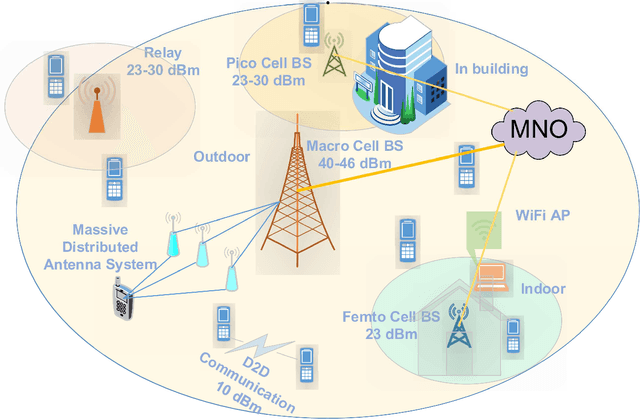
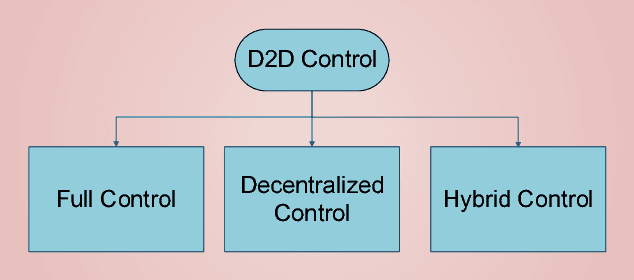
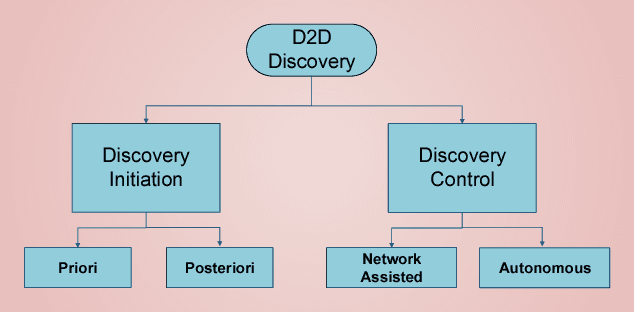
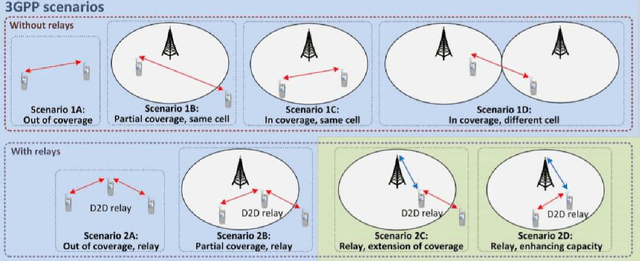
Abstract:5th generation networks are envisioned to provide seamless and ubiquitous connection to 1000-fold more devices and is believed to provide ultra-low latency and higher data rates up to tens of Gbps. Different technologies enabling these requirements are being developed including mmWave communications, Massive MIMO and beamforming, Device to Device (D2D) communications and Heterogeneous Networks. D2D communication is a promising technology to enable applications requiring high bandwidth such as online streaming and online gaming etc. It can also provide ultra- low latencies required for applications like vehicle to vehicle communication for autonomous driving. D2D communication can provide higher data rates with high energy efficiency and spectral efficiency compared to conventional communication. The performance benefits of D2D communication can be best achieved when D2D users reuses the spectrum being utilized by the conventional cellular users. This spectrum sharing in a multi-tier heterogeneous network will introduce complex interference among D2D users and cellular users which needs to be resolved. Motivated by limited number of surveys for interference mitigation and resource allocation in D2D enabled heterogeneous networks, we have surveyed different conventional and artificial intelligence based interference mitigation and resource allocation schemes developed in recent years. Our contribution lies in the analysis of conventional interference mitigation techniques and their shortcomings. Finally, the strengths of AI based techniques are determined and open research challenges deduced from the recent research are presented.
 Add to Chrome
Add to Chrome Add to Firefox
Add to Firefox Add to Edge
Add to Edge